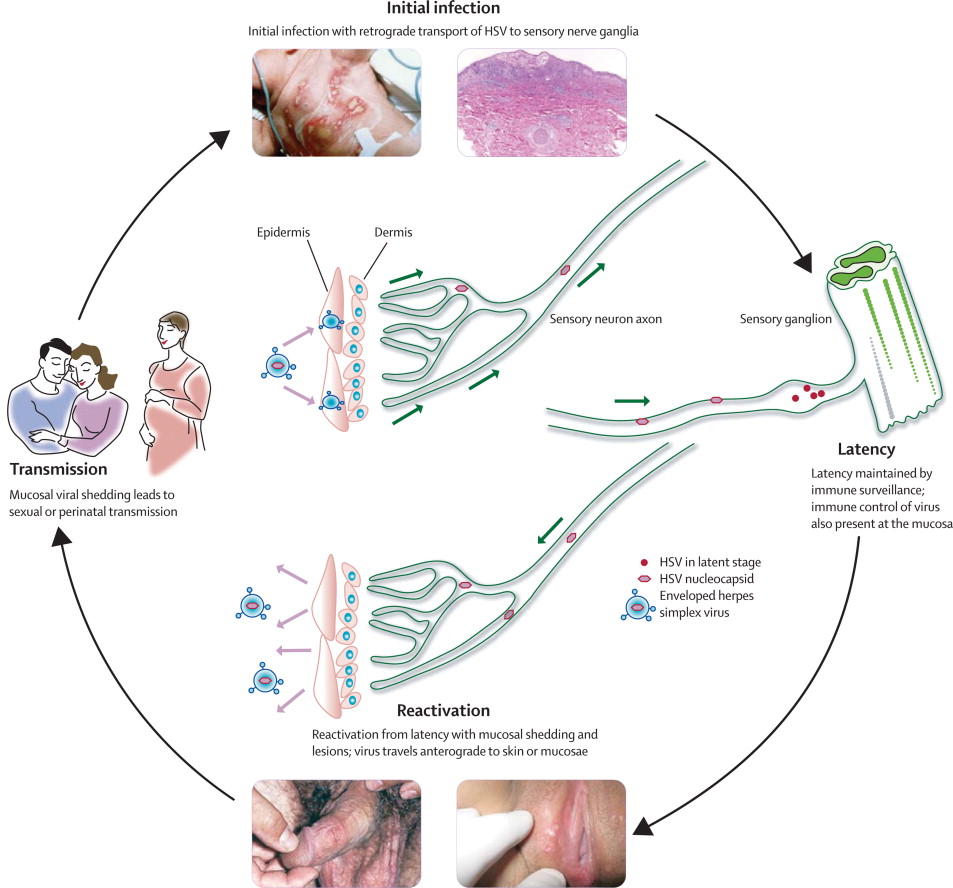| Genital herpes Rachna Gupta, MDa, , , Terri Warren, ANPd, Prof Anna Wald, MDa, b, c, e The Lancet Volume 370, Issue 9605, 22 December 2007–4 January 2008, Pages 2127–2137 |
| Epidemiology and pathogenesis of mucocutaneous HSV Infection During initial infection, HSV enters through breaks in the skin or mucosa; it then attaches to and enters epithelial cells and begins replicating. It is taken up by free sensory nerve endings found at the dermis, and the nucleocapsid containing the viral genome is transported by retrograde axonal flow to the nucleus in the sensory ganglion. Skin manifestations include vesicular lesions on an erythematous base. Lesions lead to the focal destruction of the epithelial layer and a widespread infiltrate of inflammatory cells develops in the surrounding rim and in the underlying dermal layer.128 Only 10–30% of new infections are symptomatic. After recovery from the initial infection, the virus remains latent in the sensory ganglion for the life of the host. Periodically, the virus reactivates from the latent state and travels back down the sensory nerves to the skin or mucosal surface. Viral shedding can occur either in the presence of lesions (clinical reactivation) or with very mild or no symptoms (subclinical reactivation). Shedding from mucosal surfaces leads to transmission to other sexual partners and in some cases HSV can be transmitted from mother to infant at delivery. |
 |
| http://www.sciencedirect.com/science/article/pii/S0140673607619084 |